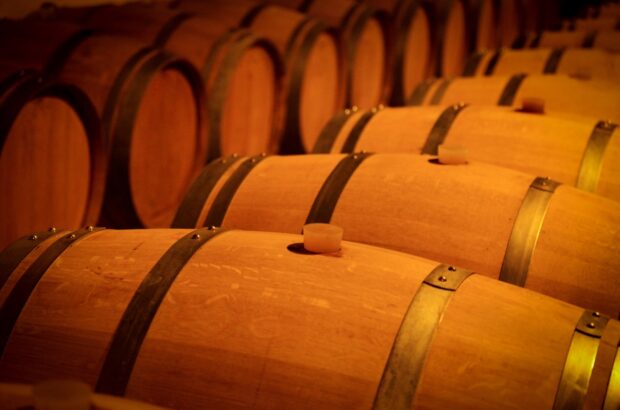What kind of flavours does it produce in a wine...?
Carbonic maceration is a form of whole bunch fermentation, when whole bunches of uncrushed grapes are used in fermentation of red wines.
It is most commonly associated with the Gamay grape and Beaujolais wines, although not exclusively.
Some key flavours associated with carbonic maceration would be:
- Bubble gum
- Kirsch
- Banana
- Strawberry
How it works
Whole bunches of grapes are placed in vats, which are then sealed and filled with CO2 to remove the oxygen.
This triggers a process within the grapes known as intracellular fermentation. Once alcohol levels reach around 2% abv, the grape skins split and release their juice.
Carbonic maceration extracts some colour from the grapes but little tannin, generally creating red wines that are light in colour, low in tannin and which have a soft, fruity wines character.
Wines made in this style include Beaujolais Nouveau and are often best when drunk young and sometimes even lightly chilled.
According to Decanter’s tasting notes decoded, ‘In these processes, esters such as ethyl cinnamate are produced in higher quantities than normal, lending flavours such as raspberry, strawberry, and bubblegum.’
What is semi-carbonic maceration?
Semi-carbonic maceration is a similar method of production, but does not include filling the vats with CO2.
Instead, when the vat is filled with the whole bunches, the weight of the grapes on the top crushes the ones below, releasing the juice. Yeast ferments the fruit and releases CO2, kick-starting carbonic maceration in the remaining un-burst grapes.
Some winemakers use this method to obtain a fresher fruit character in their wines.
Both of these methods only create a small amount of alcohol, so once it is completed, the grapes are pressed off the skins and yeast completes the fermentation process.
Whole bunch fermentation
It isn’t just Beaujolais producers who have been re-exploring this method. Pinot growers in Australia and Burgundy, for example, are also proponents of fermenting at least a portion of their vintage using whole bunches.
However, ‘Beaujolais can certainly claim to be the spiritual home of whole-bunch fermentation,’ said Simon Woolf in the February 2017 issue of Decanter magazine.







